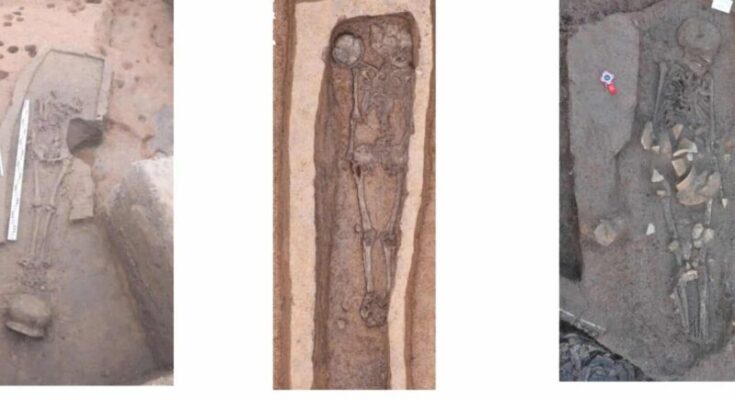
Archaeologists have discovered over 100 ancient graves at a cemetery in Hanoi’s Hoai Duc District, Vietnam.
These graves are believed to be between 2,500 and 4,000 years old, shedding light on early Vietnamese history.
The discovery was made by a team of researchers from the Vietnam Institute of Archaeology, Hanoi Museum, and the University of Social Sciences and Humanities.
They found more than 70 graves that are thought to be about 4,000-years-old and another 40 that are around 2,500-years-old. These graves were uncovered in Kim Chung Commune, providing valuable clues about early life in Vietnam.
The excavation, which began in late March and finished earlier this month, covered more than 6,000 square meters. The team dug 60 research pits, each measuring 100 square meters.
According to researchers, Vuon Chuoi was once a village from the Metal Age, which started around 6,000 years ago. During this time, people began using metals such as copper, tin, bronze, and iron to construct tools and weapons.
The village grew steadily from the late Phung Nguyen period about 4,000 years ago and continued to develop after the Dong Son period.
Burial customs of ancient peoples
The discoveries also point to early human activity in the Hanoi region, highlighting the deep roots and long history of Vietnamese ethnic groups going back to prehistoric times.
Professor Dr. Lam Thi My Dung, a member of the team from the University of Social Sciences and Humanities, explained that while individual graves had been found in residential areas before, this is the first time a separate cemetery from the pre-Dong Son period has been uncovered.
This is amazing: Vietnamese archaeologists discovered a burial site dated back nearly 3,000 years to the Bronze Age in Vuon Chuoi area, Hoai Duc District, Hanoi. pic.twitter.com/8WohTsKDz6
— Nga Pham (@ngahpham) October 22, 2024
Dung explained that the well-preserved skeletons offer a glimpse into the burial customs of ancient peoples. By studying these remains, researchers can trace the genetic links between ancient populations and modern humans.
This helps in understanding how people from that time are connected to us today and provides insight into our shared origins.
Archaeologists also found house posts, which suggest that the Dong Son people may have lived in longhouses, much like some ethnic groups in central Vietnam do today.
The excavation team mentioned that this finding offers new insights into the housing structures of ancient Dong Son villages and how their living spaces were organized.
The team has recommended more research on the unexplored parts of the site and called for detailed studies.
They have also urged the Hanoi People’s Committee and the Department of Culture and Sports to fast-track the recognition of Vuon Chuoi as a city-level heritage site. Plans for its preservation, protection, and enhancement of historical value have been proposed.
Originally discovered in 1969, the Vuon Chuoi site has undergone 11 excavation phases. Archaeologists consider it a rare and vital site from the Metal Age in northern Vietnam.



